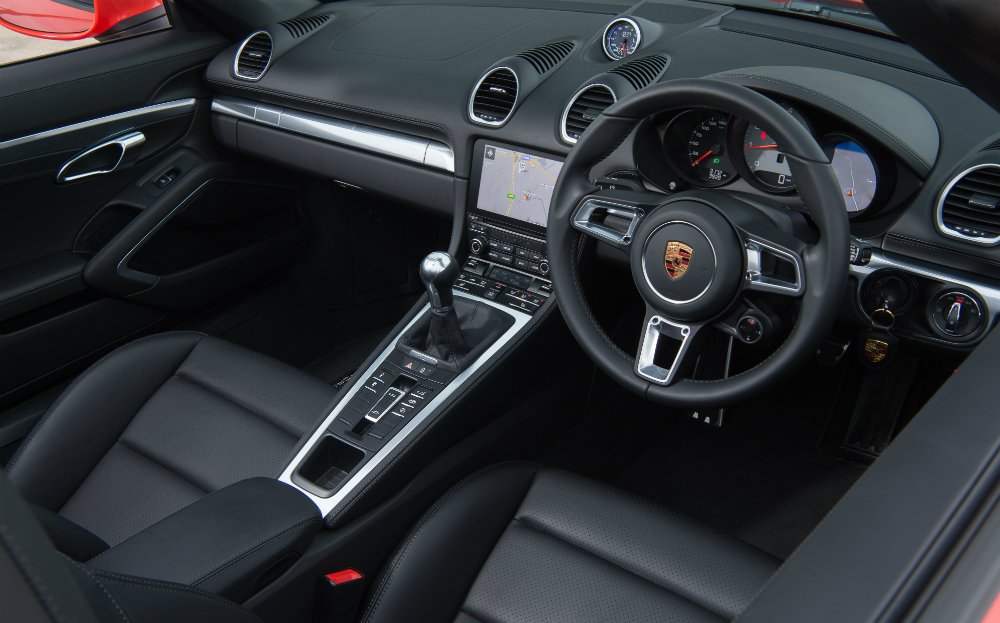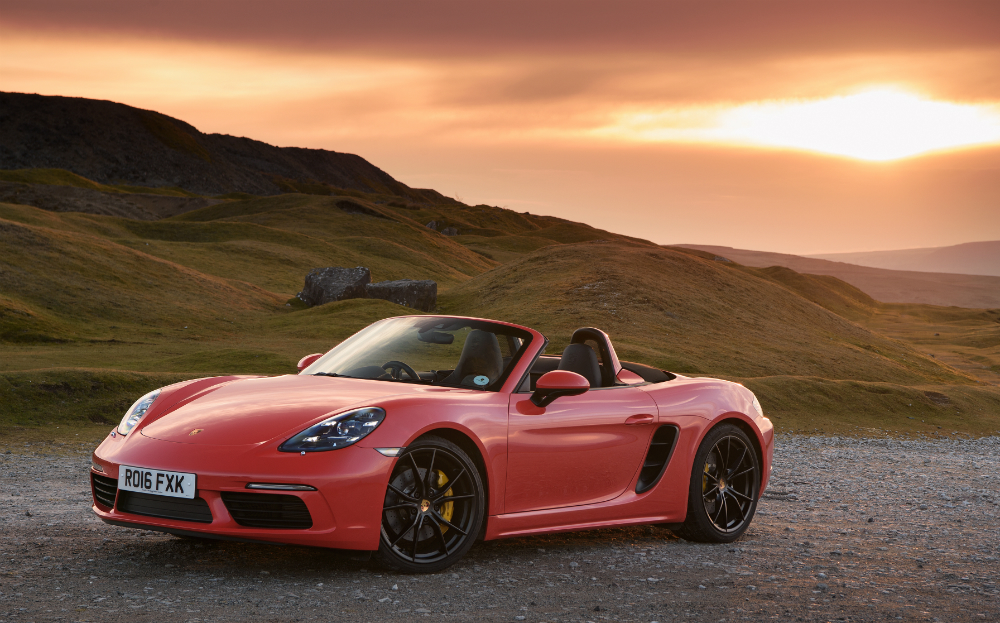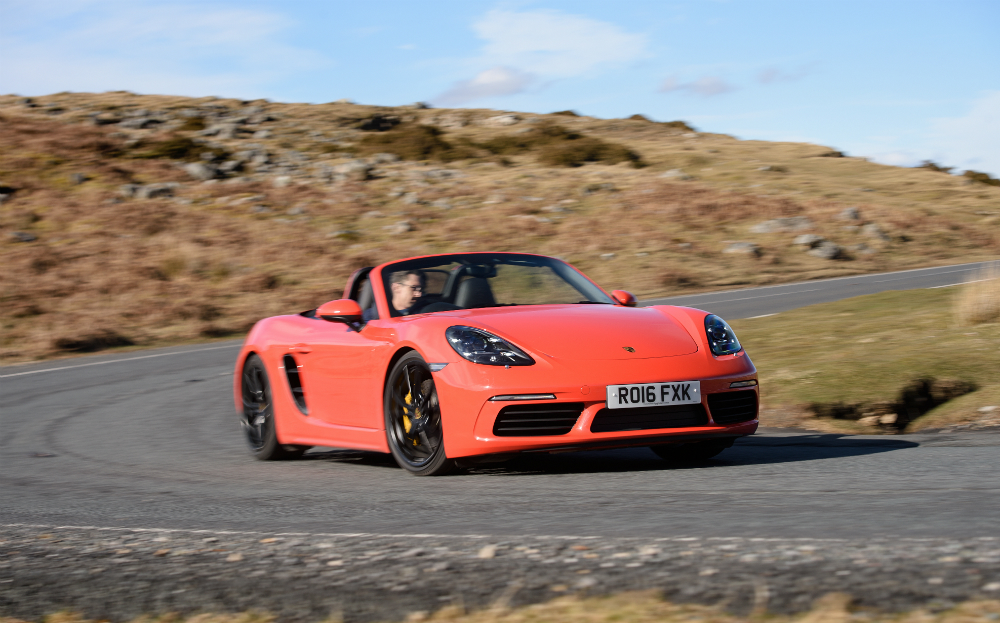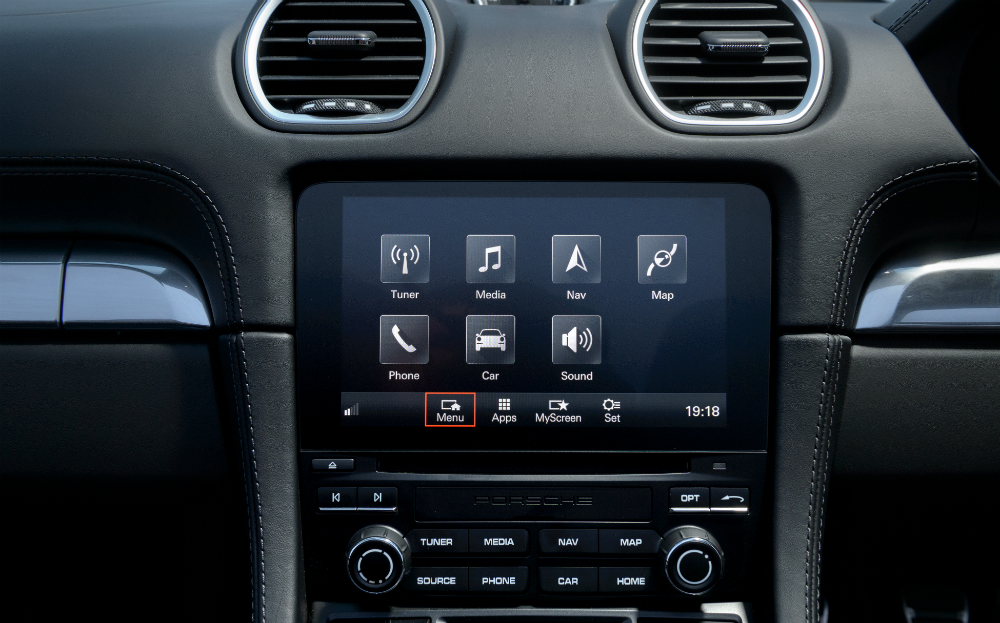First Drive review: 2016 Porsche 718 Boxster S
Leaner, meaner, but more fun?
PORSCHE sports cars and flat-six cylinder engines go together like Spring time and the dawn chorus, chocolate brownie and ice cream, beer and pint glasses or roaring fires and reading chairs. The two are inseparable, so it’s little surprise that Porsche’s new 718 version of the Boxster is causing a stir amongst car enthusiasts. One that, by comparison, makes “turbogate” — the controversy surrounding the turbocharging of nearly all 911 models — seem like a mere footnote in Porsche’s history.
First appearances may suggest this is another version of Porsche’s perennial Boxster with some styling tweaks, a new ‘718’ badge and different headlights. But this is not just a refresh of the roadster that was launched in 1996 and is said to have kept Porsche from going bankrupt. It’s pretty much an entirely new car — with a new four-cylinder engine.
Everything has changed bar the luggage compartment lids and windscreen. Take a closer look. The new Boxster looks rounder and less aggressive than before, while still having those lithe mid-engined roadster proportions that made it so delightful in the first place.
It’s a bit wider, and carries with it hints of bigger siblings in the lights — you’ll see echoes of 911 and 918 peering out here and there — and it looks good. Neat, tidy and quietly sporty.
View the Porsche Boxsters for sale on driving.co.uk
The big news is what’s been changed out of sight. This car is all about the engine. Or lack of it. Out go the naturally-aspirated 2.7 or 3.4-litre flat-six cylinder options for the basic Boxster and Boxster S, and in come a pair of turbocharged flat-four cylinder motors of 2 and 2.5-litre capacity.
This is unsettling news for those who measure value based on size, and there’s been a fair few wrinkled noses amongst more traditional Porsche enthusiasts.
![]()
Still, there’s a backstory here. The car that inspired the Boxster, the 550 Spyder, which was made infamous by James Dean, had four cylinders. In the 1960s, Porsche’s racing cars featured four-cylinder motors. And more recently, cars including the 924, 944 and 968 made do with four cylinders.
Driving enthusiasts in their string-back gloves can take some comfort from the knowledge that although the engines are smaller, they are anything but weak: the standard Boxster now produces 296bhp and the S has 345bhp (thanks to a more sophisticated turbocharger with variable vanes) — up from 261 and 311 respectively compared with the outgoing six-cylinder Boxsters.
That means a decent chunk more performance from a much smaller, more efficient motor — win-win for everybody.
And the numbers more than match the claims. When fitted with the optional, more efficient seven-speed PDK gearbox — a six-speed manual is standard — a regular 718 Boxster now gets to 62mph from rest in just 4.7 seconds, hits 170mph and can manage 40.9mpg, while the S gets to the benchmark in 4.2, 177mph and 38.7mpg.
That’s exceptionally quick, delightfully efficient and a noticeable improvement over what went before. If this were an exam, new 718 Boxster would be picking up some sort of award.
![]()
Porsche hasn’t forgotten the suspension and handling, either. Lessons learned from both the sporty Cayman GT4 and the new Porsche 911 Turbo mean that the Boxster is more nimble, more capable and still as remarkably benign as it ever was. The faster you drive, the better it gets. There’s a feeling that the car always has more grip, more talent and more in reserve, even with the S’s 345bhp.
You can drive as hard as you like, and as long as you’ve picked the correct setting from the little rotary ‘mode switch’ dial on the steering wheel — choosing from Normal, Sport, Sport Plus or Individual — there’s plenty of fun on offer for any level of talent.
The steering is taken from the much faster 911 Turbo, making it 10% faster than before and beautifully accurate (though not, it has to be said, especially good at telling your fingertips how much grip the front tyres have through a bend) and the steel brakes are lifted from the 911 Carrera S and are possibly some of the best-feeling of any car, anywhere. The expensive carbon ceramic option certainly seems like overkill when the standard brakes are this good.
The glorious wail of the flat-six cylinder engine is nowhere to be found
A feeling of expert engineering pervades everything: it rides very well as long as you don’t have the dampers in full Sport Plus mode, at which point it becomes a bit bouncy for a broken British road. And with the fast roof, fabulous ergonomics and general practicality, there’s very little to criticise.
You’ll have sensed that there is a “but” coming, though, and it’s aimed at the heart of the Boxster’s transformation to a 718: the flat-four engine. At idle it’s louder and more gravelly than the old car, which isn’t necessarily unpleasant, but start to drive and there’s no doubt that the glorious wail of the flat-six cylinder engine is nowhere to be found. This is a Porsche that sounds very much like a Subaru Impreza, another car to feature a flat-four motor.
It’s no surprise that such similar engines sound the same, but hearing it burble and thrum from the back of a Porsche is going to take some getting used to.

And there’s worse to come. Even though the Boxster S accelerates much, much faster than the old car, the engine produces power in one long, slightly unemotional thud. There’s no building of power, no glorious change in noise. And it’s all over by 6,500rpm pervades the car might redline at 7,500, but the last 1,000rpm feels a bit… flat.
Yes, it’s faster. Yes, it does more miles-per-gallon. And yes, it produces less C02 yet more horsepower. But it isn’t as much fun.
The truth is, it’s always a tough job for a car company to mess with a successful recipe, especially for a model that’s widely recognised as a class leader. It’s tougher still when it represents such a fundamental shift for the character of Porsche’s popular Boxster and Cayman, which always stood out of the crowd for their engines.
Engineers call it downsizing. And if you’re being objective, the Boxster is improved in every direction. If you were being harsh, you’d call it a fun reduction.
There’s a big reservation around the fact that amid all the improvement, the Boxster, Porsche’s baby sports car, has lost something of the drama and excitement you got from an engine that was more of an event. A roadster is as much about the satisfaction of driving as the absolute speed, and this new Porsche feels a bit more effective than soulful. It’s improved, but “better” might be relative.
Buying Guide: Porsche Boxster 986, 987 and 981 models







